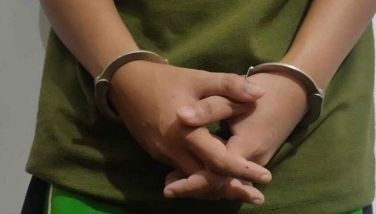Group calls attention to rare diseases
CEBU, Philippines - In order to raise awareness of rare diseases and the specific challenges faced by patients and their loved ones, the Philippine Society of Orphan Disorder (PSOD) is encouraging the public to help in the advocacy to spread awareness.
PSOD president Cynthia Magdaraog said the rare diseases, also called orphan disorders, affect one in every 20,000 individuals.
PSOD, a non-profit organization, was organized to continue the efforts of doctors to ensure sustainability of medical and financial support of patients with rare disorders.
Magdaraog said there are 29 types of “inborn errors of metabolism” have already been documented in the Philippines, resulting in muscular disorders and affecting speech, hearing, vision and brain functioning.
Parents with children that have rare diseases gathered at the Department of Health as they discuss the stigma attached to those afflicted with rare diseases that will finally be erased as wider and deeper understanding.
So far, based on the record of PSOD, there are 15 families in Cebu whose children had rare disease.
In Metro Manila, there are 147 families recorded.
Magdaraog admitted that she has a son, who is now 34 years old, who was diagnosed with Pompe disease, a rare neuromuscular genetic disorder that occurs in babies, children and adults who inherit a defective gene from the parents.
Magdaraog narrated that her son showed signs of muscle weakness, making things like walking or sitting a challenge for her son at the age of nine.
According to her, the doctors thought it was muscle dystrophy although they were not really sure. It was five years later, while seeing a muscular dystrophy specialist in San Francisco, USA, when they finally knew what ails her son —Pompe disease.
Little is known about Pompe disease except that it is rare, inherited and disables either the heart or skeletal muscles. Those afflicted with the condition often develop respiratory weakness later in life.
Magdaraog said that afflicted children are oftentimes diagnosed late or given an incorrect diagnosis.
And those who are fortunate to be diagnosed promptly face the challenge of finding a specialist or a facility that is familiar with the condition or have the means to afford the cost of treatment, she said.
“Mas mabuti na bata pa, ma-diagnosed para mabigyan siya na whatever available treatment,” Magdaraog added.
In yesterday’s forum, Barbra Cavan, a clinical geneticist and pediatrician, explained to parents that that babies born with the disorder usually appear healthy and normal, only to develop the disorder later in life.
Cavan said that more than 7,000 rare diseases affect millions of people and 75 percent of those affected are children. None of these diseases have a cure and only five percent have treatments and therapies as remedy.
“The nature of these illnesses is hardly known due to lack of information and only a few medical professionals, particularly in the country, are aware of these disorders and know how to diagnose and address these conditions,” Cavan said.
Among the identified rare diseases are Pyruvoltetrahydropterin Synthase Deficiency, Adrenoleukodystrophy, Autoimmune Chronic Active Hepatitis, Galactosemia, Gaucher Disease, Hemophagocytic Lymphohystiocytosis, Heperphenylalanemia, Heterozygous Cystenuria and Holocarboxylase synthase deficiency.
Others are Homocystenuria, Homozygous Cystenouria, Lowe Syndrome, LSD – Multiple Sulfatase Deficiency, Maple Syrup Urine Disorder, Methyl Malonic Aciduria, Moebius Syndrome; Mucolipidosis, Mucopolysaccharidosis, Niemann pick, Osteogenesis Imperfecta, Phenylketonuria, Pompe Disease, Respiratory Chain Complex/Deficiency, Tay Sach’s Disease, Tyrosinemia and Urea Cycle Defects.
One of those who attended the forum yesterday was Juvy Ajoc of Lapu-Lapu City.
Juvy has three children but her second child, two-year old Rheus Mendez suffers from a rare disease called Osteogenesis Imperfecta (OI) or more commonly known as “brittle bone disease”.
OI is a congenital disease, and is caused by a defect in the gene that produces type 1 collagen, an important building block of bone. It weakens the bone making it prone to fractures.
“Lisod kaayo gyud pero pasalamat lang mi kay naay mogabay namo, gipasabot mi sa kahimtang sa among anak. Tandugonon gyud kaayo akong anak kay ika-unom na gyud ni siyang gisemento ang iyang tiil,” Ajoc said.
Ajoc said that every three months, they have to set aside P5,000 for vials that has to be injected to Rheus. She, however, is thankful that the organization assisted them by providing access to doctors and researchers in the management of the condition of her child. –(FREEMAN)
- Latest
- Trending



















